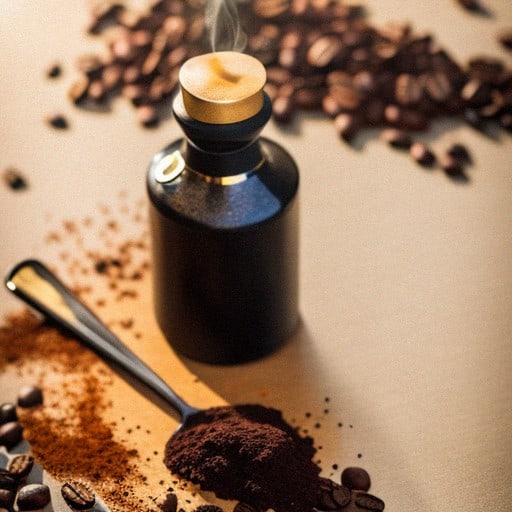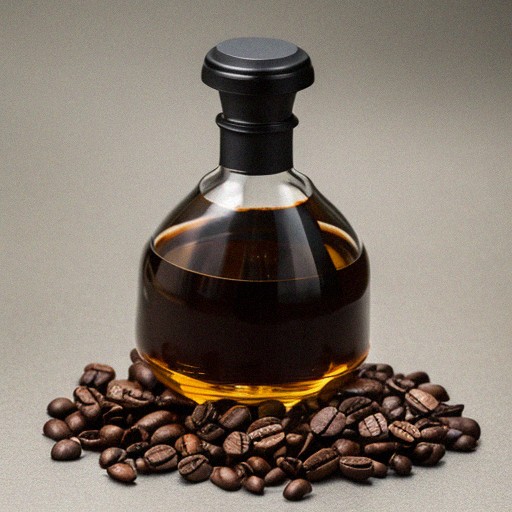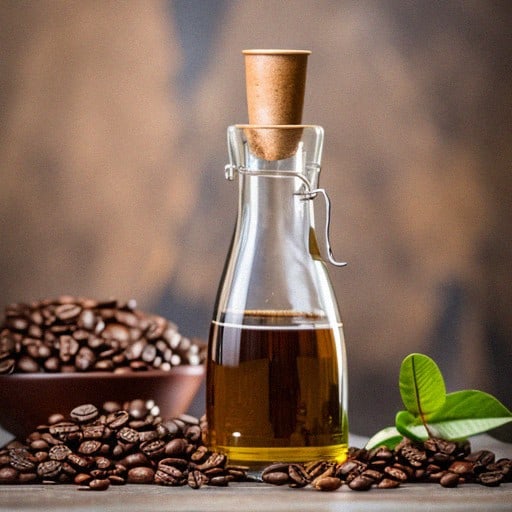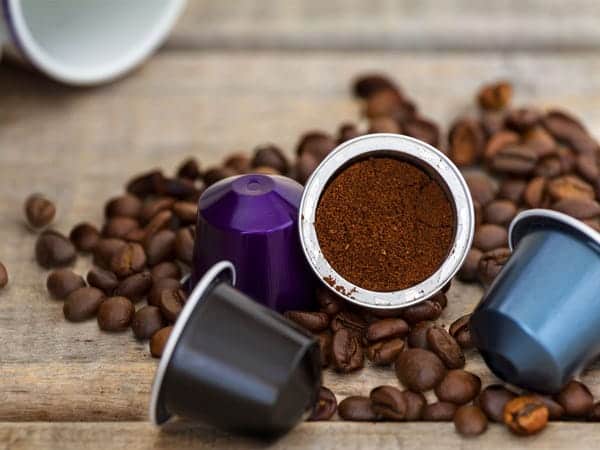What’s Coffee Extract: An Introduction to the Popular Ingredient
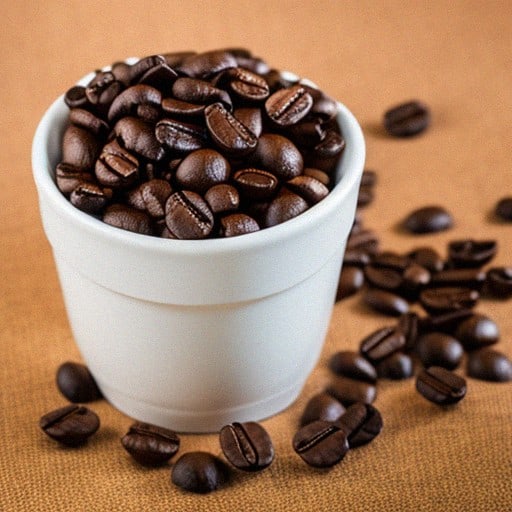
Coffee extract is a concentrated liquid that is made using coffee beans and a neutral-flavored alcohol. It is often used in baked goods, ice cream, and cocktails to add a rich coffee flavor. Coffee extract captures the taste, aroma, and medicinal properties of coffee beans in a small bottle, making it a versatile ingredient in the kitchen.
The extraction process of coffee extract involves soaking roasted coffee beans in alcohol, which extracts the flavor compounds from the beans. The alcohol is then evaporated, leaving behind a concentrated coffee extract. There are different types of coffee extract available, including natural and artificial extracts.
While natural extracts are made using only coffee beans and alcohol, artificial extracts may contain other additives to enhance the flavor and aroma.
What is Coffee Extract
Coffee extract is a concentrated liquid that is made using coffee beans and a neutral-flavored alcohol. It is a lot like other extracts you find in your cupboard like vanilla, almond, or coconut. It is very potent and almost undrinkable on its own.
Most coffee extracts are made naturally, with actual coffee beans. The process to make coffee extract involves soaking coffee beans in alcohol to extract the flavor, aroma, and medicinal properties. The resulting liquid is then strained and bottled.
Coffee extract is used in a variety of ways, including as a flavoring in baked goods, ice cream, and cocktails. It is also used to add a rich coffee flavor to sauces and marinades.
Coffee extract is sometimes confused with coffee concentrate. While they are both concentrated forms of coffee, coffee concentrate is made by brewing coffee with a higher coffee-to-water ratio than normal. Coffee extract, on the other hand, is made by extracting the flavor from coffee beans using alcohol.
In summary, coffee extract is a concentrated liquid made from coffee beans and alcohol. It is a potent flavoring agent that is used in a variety of ways to add a rich coffee flavor to foods and beverages.

The Extraction Process
Coffee extraction is the process of dissolving ground coffee with hot water. The extraction process is influenced by several factors such as roast, grind size, time, and water temperature. In this section, we will discuss the different stages of the coffee extraction process.
Roasting and Grinding
Roasting is the process of heating green coffee beans to transform them into the brown beans we are familiar with. Roasting affects the flavor and aroma of the coffee, and it also influences the extraction process. Darker roasts tend to have less acidity and more bitterness, while lighter roasts have more acidity and less bitterness.
Grinding coffee beans is the process of breaking them down into smaller particles. The size of the grind affects the extraction process. Finer grinds have a larger surface area, which means they extract more quickly and produce a stronger coffee. Coarser grinds have a smaller surface area, which means they extract more slowly and produce a weaker coffee.
Brewing
Brewing is the process of adding hot water to ground coffee. There are several different brewing methods, including drip, pour-over, and French press. Each method has its own advantages and disadvantages, and each produces a different flavor profile.
The brewing process involves controlling the ratio of coffee to water, as well as the water temperature and the time the coffee is in contact with the water. The ratio of coffee to water is usually expressed as a weight ratio, such as 1:15 (one part coffee to fifteen parts water). The water temperature is also important, as hotter water extracts more quickly than cooler water.
Straining
After the coffee has been brewed, it needs to be strained to remove the coffee grounds. This can be done using a paper filter, a metal filter, or a cloth filter. Each method has its own advantages and disadvantages.
Using a paper filter produces a cleaner cup of coffee with less sediment, but it also removes some of the coffee oils that contribute to the flavor and aroma. Using a metal filter or a cloth filter allows more of the coffee oils to pass through, which can result in a richer and more complex flavor.
Concentrating
Concentrating is the process of reducing the volume of brewed coffee to produce a more concentrated coffee. This can be done by simmering the coffee on the stove or by using a coffee concentrate maker. Concentrating can produce a stronger and more intense coffee, but it can also result in a more bitter and astringent flavor if not done carefully.
In conclusion, the coffee extraction process is a complex and multi-stage process that involves roasting and grinding the coffee, brewing it with hot water, straining it to remove the grounds, and concentrating it to produce a more intense flavor. By controlling the different variables involved in the extraction process, it is possible to produce a wide range of coffee flavors and aromas.
Types of Coffee Extract
There are several types of coffee extract available in the market, each with its unique flavor and aroma. In this section, we will discuss the four main types of coffee extract: Green Coffee Extract, Coffee Concentrate, Coffee Flavoring, and Coffee Essence.
Green Coffee Extract
Green coffee extract is made by soaking unroasted coffee beans in water and then extracting the active compounds from the beans. This type of coffee extract is high in chlorogenic acid, which is believed to have several health benefits, including weight loss and improved heart health.
Coffee Concentrate
Coffee concentrate is made by brewing coffee with a higher coffee-to-water ratio than usual and then reducing the resulting liquid to a concentrated form. This type of coffee extract is used as a base for making iced coffee, as it is less diluted than regular coffee and won’t become watered down when ice is added.
Coffee Flavoring
Coffee flavoring is typically made by adding natural or artificial flavors to a liquid base. This type of coffee extract is often used to flavor baked goods, ice cream, and other desserts. It can also be added to coffee to enhance its flavor.
Coffee Essence
Coffee essence is a highly concentrated form of coffee extract that is made by reducing brewed coffee to a thick syrup. This type of coffee extract is often used as a flavoring agent in recipes that require a strong coffee flavor, such as tiramisu or coffee-flavored liqueurs.
In conclusion, coffee extracts come in various forms, each with its unique flavor and aroma. Green coffee extract is high in chlorogenic acid, coffee concentrate is used as a base for making iced coffee, coffee flavoring is used to flavor baked goods and ice cream, and coffee essence is a highly concentrated form of coffee extract.
Using Coffee Extract
Coffee extract is a versatile ingredient that can be used in a variety of ways to add a rich coffee flavor to your favorite recipes. Here are some ways to use coffee extract:
In Baking
Coffee extract is a great addition to baked goods, such as cakes, cookies, and brownies. It can be used to enhance the flavor of chocolate desserts, or to add a new dimension to vanilla desserts. To use coffee extract in baking, simply substitute it for some of the liquid in your recipe. For example, if your recipe calls for 1 cup of milk, you could use 1/2 cup of milk and 1/2 cup of coffee extract.
In Beverages
Coffee extract can also be used to add flavor to beverages, such as coffee, tea, and hot chocolate. To make a coffee-flavored beverage, simply add a few drops of coffee extract to your drink. You can also use coffee extract to make flavored syrups for cocktails and other mixed drinks.
In Savory Dishes
Coffee extract can be used in savory dishes as well. It can be added to marinades and sauces to give them a rich, complex flavor. For example, you could use coffee extract in a marinade for steak, or in a sauce for pork chops. Coffee extract can also be used in recipes for savory desserts, such as tiramisu.
When using coffee extract, it’s important to remember that it is a concentrated flavoring agent. A little goes a long way, so start with a small amount and add more as needed. It’s also important to choose a high-quality coffee extract that is made with real coffee beans and alcohol, rather than artificial flavors.
Overall, coffee extract is a versatile ingredient that can be used in a variety of ways to add a rich coffee flavor to your favorite recipes. Whether you’re baking desserts, making beverages, or cooking savory dishes, coffee extract is a great addition to your pantry.
Comparing Coffee Extract and Brewed Coffee
Flavor Profile
Coffee extract and brewed coffee have different flavor profiles. Brewed coffee is typically more acidic and has a lighter body, while coffee extract has a stronger, more concentrated flavor with a thicker body. The bitterness in coffee extract is more pronounced compared to brewed coffee.
Caffeine Content
The caffeine content in coffee extract is higher than that of brewed coffee. This is because coffee extract is made by extracting the compounds from the coffee beans, including caffeine, resulting in a more concentrated product. However, the exact amount of caffeine in coffee extract can vary depending on the brand and brewing process.
Shelf Life
Coffee extract is shelf-stable and has a longer shelf life compared to brewed coffee. This is because the extraction process removes water from the coffee, making it less susceptible to spoilage. Coffee extract can be stored at room temperature for several months, while brewed coffee needs to be consumed within a few hours or refrigerated for later use.
In summary, coffee extract has a stronger, more concentrated flavor with a thicker body and higher caffeine content compared to brewed coffee. It also has a longer shelf life and is more shelf-stable. However, brewed coffee has a lighter body and is less bitter compared to coffee extract.
Health Benefits and Considerations
Coffee extract has been associated with several health benefits, including antioxidant properties, and caffeine’s effect on anxiety. However, while coffee extract has potential health benefits, it is essential to consider the potential risks and side effects associated with its use.
Antioxidant Properties
Coffee extract is rich in antioxidants, which are compounds that protect cells from damage caused by free radicals. Free radicals are unstable molecules that can cause oxidative stress, leading to cell damage and inflammation. Antioxidants neutralize free radicals, reducing the risk of chronic diseases such as cancer, heart disease, and Alzheimer’s disease.
Green coffee extract, in particular, has higher levels of antioxidants than roasted coffee beans. A study found that green coffee extract reduced oxidative stress and inflammation in obese individuals with metabolic syndrome, suggesting that it may have potential health benefits for individuals at risk of chronic diseases.
Caffeine and Anxiety
Coffee extract contains caffeine, a natural stimulant that can improve mental alertness and reduce fatigue. However, caffeine can also cause anxiety and disrupt sleep patterns in some individuals.
While caffeine can have a positive effect on mood and mental performance, excessive consumption can cause adverse side effects. It is recommended that individuals limit their caffeine intake to no more than 400 milligrams per day, which is roughly equivalent to four cups of coffee.
It is also important to note that caffeine sensitivity can vary among individuals, and some may be more susceptible to caffeine’s adverse effects than others. Therefore, it is essential to consider individual tolerance levels when consuming coffee extract.
In conclusion, coffee extract has potential health benefits, including antioxidant properties and caffeine’s effect on mental performance. However, it is crucial to consider the potential risks and side effects associated with its use, such as caffeine’s effect on anxiety and sleep patterns. As with any dietary supplement, it is important to consult a healthcare professional before incorporating coffee extract into your diet.
Quality Control in Coffee Extraction
Quality control is an essential aspect of coffee extraction. It ensures that the coffee is consistent in taste, aroma, and strength. Quality control measures are necessary to ensure that the coffee is not over-extracted or under-extracted, resulting in a bitter or weak brew.
One of the primary tools used in quality control is the refractometer. It measures the total dissolved solids (TDS) in the coffee, which is an indicator of the extraction yield. The extraction yield is the percentage of coffee solids that have been extracted from the grounds. A high extraction yield indicates that the coffee is strong and flavorful, while a low extraction yield indicates that the coffee is weak and lacks flavor.
To achieve the optimal extraction yield, it is crucial to monitor the TDS throughout the brewing process. Over-extraction occurs when too many coffee solids are extracted, resulting in a bitter taste. Under-extraction occurs when too few coffee solids are extracted, resulting in a weak taste.
To avoid over-extraction or under-extraction, it is important to adjust the brewing parameters, such as the grind size, water temperature, and brew time. These parameters can be adjusted to achieve the desired extraction yield and TDS.
In conclusion, quality control measures are essential in coffee extraction to ensure consistency in taste, aroma, and strength. The use of a refractometer to measure TDS and extraction yield is a crucial tool in achieving optimal coffee extraction. By monitoring the TDS throughout the brewing process and adjusting the brewing parameters, over-extraction or under-extraction can be avoided, resulting in a perfectly brewed cup of coffee.
Choosing the Right Coffee for Extraction
When it comes to coffee extraction, choosing the right coffee beans is crucial. The type of coffee beans you choose can affect the flavor, aroma, and overall quality of your coffee. Here are some things to consider when selecting coffee beans for extraction:
Coffee Beans
The two most common types of coffee beans are Arabica and Robusta. Arabica beans are known for their high-quality flavor and aroma, while Robusta beans are known for their strong, bitter taste. Depending on your preference, you may choose one over the other for your coffee extraction.
Roasts
Coffee beans come in different roasts, ranging from light to dark. Light roasts are known for their mild flavor and acidity, while dark roasts are known for their bold, smoky flavor. The roast you choose can affect the overall taste of your coffee, so it’s important to choose a roast that complements your taste preferences.
Origins
Coffee beans come from different regions around the world, each with its own unique flavor profile. For example, beans from Ethiopia are known for their fruity and floral notes, while beans from Brazil are known for their nutty and chocolatey flavors. Consider the origin of the beans when selecting coffee for extraction.
Roast Date
The freshness of your coffee beans can also affect the quality of your extraction. It’s best to use coffee beans within two weeks of their roast date for optimal flavor and aroma. If the beans are too old, they may have lost some of their flavor and aroma.
In summary, choosing the right coffee beans for extraction involves considering the type of beans, roast, origin, and roast date. By selecting high-quality beans that complement your taste preferences, you can achieve a delicious and satisfying cup of coffee.
Frequently Asked Questions
How can I make coffee extract without using alcohol?
To make coffee extract without using alcohol, you can use water or glycerin instead. Simply steep coffee grounds in hot water or glycerin for a few hours, then strain the mixture and use the resulting liquid as your coffee extract.
What are the benefits of using coffee extract?
Coffee extract is a concentrated form of coffee that can be used in a variety of ways, from enhancing the flavor of baked goods to adding a boost of caffeine to your morning smoothie. Using coffee extract can also be a great way to reduce waste, as it allows you to use up leftover coffee grounds.
What ingredients are typically found in coffee extract?
Coffee extract is typically made from coffee grounds and a liquid, such as water, alcohol, or glycerin. Some brands may also add additional flavorings or sweeteners to their coffee extract.
Can coffee extract be used as a substitute for coffee in baking?
Yes, coffee extract can be used as a substitute for coffee in baking. It is a concentrated form of coffee that can be used to enhance the flavor of baked goods without adding additional liquid.
What are the best ways to use coffee extract in baking?
Coffee extract can be used in a variety of baked goods, from cakes and cookies to muffins and breads. It can also be added to frosting, whipped cream, and other toppings for an extra kick of coffee flavor.
Does coffee extract contain a lot of caffeine?
The caffeine content of coffee extract can vary depending on the brand and how it is made. However, because it is a concentrated form of coffee, it generally contains more caffeine per serving than a regular cup of coffee. As with any caffeinated product, it is important to consume coffee extract in moderation.
